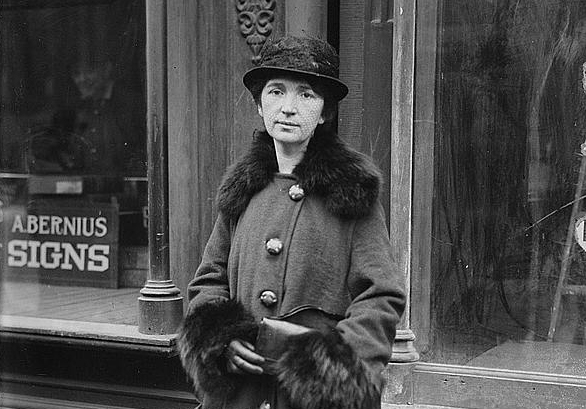The French have a word for it: débaptiser.
A prominent French scientist, Alexis Carrel (1878-1944) won the Nobel Prize for his inventions. His work saved military and civilian lives during both world wars. After his death, a grateful nation baptized the medical school of Lyons as Alexis-Carrel University. In the 1990s, however, critics recalled that Carrel had been an ardent eugenicist. In his book Man the Unknown (1935), Carrel recommended the use of gas chambers to deal with criminals and the insane. In the 1936 preface to the German edition, he praised the new National Socialist government’s eugenic policy of forced sterilization. The French government quickly debaptized Alexis-Carrel University and rebaptized it in the name of T. H. Laënnec, the uncontroversial inventor of the stethoscope.

In our own nation the work of debaptism continues apace as we confront our racist history. Calhoun Hall at Yale has been renamed. A senator and vice president, John Calhoun was an ardent defender of slavery and white supremacy. Georgetown recently removed the names of Thomas Mulledy and William McSherry from campus buildings since both Jesuits had been prominent in the sale of slaves to distant Southern plantations in 1838
As we purify our national memory, I would like to nominate my own candidate for debaptism: Sanger Square in Manhattan. Named after Margaret Sanger (1879-1966), the founder of the Birth Control League (the future Planned Parenthood), the square honors an improbable feminist icon who championed a coercive brand of eugenics.
Sanger’s eugenics creed is clearly stated in her speech “My Way to Peace” (1932). The centerpiece of the program is vigorous state use of compulsory sterilization and segregation. The first class of persons targeted for sterilization is made up of people with mental or physical disability. “The first step would be to control the intake and output on morons, mental defectives, epileptics.” A much larger class of undesirables would be forced to choose either sterilization or placement in state work camps. “The second step would be to take an inventory of the second group, such as illiterates, paupers, unemployables, criminals, prostitutes, dope-fiends; classify them in special departments under government medical protection and segregate them on farms and open spaces.” Those segregated in these camps could return to mainstream society if they underwent sterilization and demonstrated good behavior. Sanger estimates that 15 million to 20 million Americans would be targeted in this regime of forced sterilization and concentration camps. In Sanger, the humanitarian dream of a world without poverty and illness has deteriorated into a coercive world where the poor, the disabled and the addicted simply disappear.
Sanger represents a genteel prejudice shared by many members of America’s ruling class in the early 20th century.
Sanger’s eugenics project carried its own racial preoccupation. In a letter of Dec. 10, 1939, to Clarence Gamble (cited here), she explains the nature of her organization’s outreach to the African-American community: “The most successful educational approach to the Negro is through a religious appeal. We don’t want the word to get out that we want to exterminate the Negro population, and the minister is the man who can straighten out that idea if it ever occurs to any of their more rebellious members.” In her autobiography she proudly recounts her address to the women of the Ku Klux Klan in Silver Lake, N.J., in 1926.
Source:
https://www.americamagazine.org/politics-society/2017/11/27/margaret-sanger-was-eugenicist-why-are-we-still-celebrating-her
Batman
ReplyDeleteArdahan
Adıyaman
Antalya
Giresun
R4BMSP
görüntülüshow
ReplyDeleteücretli show
A52M8
https://titandijital.com.tr/
ReplyDeletedenizli parça eşya taşıma
sinop parça eşya taşıma
artvin parça eşya taşıma
antep parça eşya taşıma
O4İC
https://titandijital.com.tr/
ReplyDeleteağrı parça eşya taşıma
maraş parça eşya taşıma
muğla parça eşya taşıma
uşak parça eşya taşıma
V6FQH
ankara parça eşya taşıma
ReplyDeletetakipçi satın al
antalya rent a car
antalya rent a car
ankara parça eşya taşıma
AW1B
Çorlu Lojistik
ReplyDeleteManisa Lojistik
Eskişehir Lojistik
Afyon Lojistik
Konya Lojistik
PUUH
A02BF
ReplyDeleteIğdır Evden Eve Nakliyat
Muş Parça Eşya Taşıma
Kripto Para Borsaları
Keçiören Boya Ustası
Erzurum Şehirler Arası Nakliyat
Van Şehir İçi Nakliyat
Bitlis Evden Eve Nakliyat
Gümüşhane Lojistik
Sincan Parke Ustası
50E9F
ReplyDeleteÜnye Televizyon Tamircisi
Bartın Lojistik
Zonguldak Şehir İçi Nakliyat
Sivas Evden Eve Nakliyat
Mardin Evden Eve Nakliyat
Adıyaman Lojistik
Batman Şehirler Arası Nakliyat
Mith Coin Hangi Borsada
Manisa Lojistik
35FCF
ReplyDeleteÇerkezköy Çamaşır Makinesi Tamircisi
Adıyaman Şehirler Arası Nakliyat
Ağrı Lojistik
Kucoin Güvenilir mi
Gümüşhane Lojistik
Rize Lojistik
Zonguldak Şehir İçi Nakliyat
Uşak Şehir İçi Nakliyat
Adıyaman Lojistik
4BC2A
ReplyDeletereferans kodu %20
CC654
ReplyDeletereferanskodunedir.com.tr
8E1AC
ReplyDeletemuğla görüntülü sohbet uygulama
bolu görüntülü sohbet kadınlarla
kütahya bedava görüntülü sohbet sitesi
yozgat canlı görüntülü sohbet
eskişehir sesli sohbet
kars görüntülü sohbet kadınlarla
siirt rastgele görüntülü sohbet
sinop görüntülü sohbet siteleri ücretsiz
kütahya canlı sohbet bedava
DAD77
ReplyDeleteKırıkkale Mobil Sohbet
zonguldak en iyi görüntülü sohbet uygulamaları
kırklareli kızlarla rastgele sohbet
Burdur Ücretsiz Sohbet Siteleri
Erzincan Sohbet
Şırnak Telefonda Görüntülü Sohbet
rastgele sohbet odaları
aydın rastgele sohbet
karabük ücretsiz sohbet odaları
BB5E8
ReplyDeleteEdirne Mobil Sohbet
kadınlarla sohbet et
ücretsiz sohbet uygulaması
telefonda rastgele sohbet
urfa ücretsiz görüntülü sohbet
bursa kadınlarla sohbet et
Canlı Sohbet Sitesi
random görüntülü sohbet
en iyi görüntülü sohbet uygulamaları
72764
ReplyDeleteTrovo Takipçi Hilesi
Binance Ne Zaman Kuruldu
Bitcoin Nasıl Alınır
Görüntülü Sohbet Parasız
Btcturk Borsası Güvenilir mi
Görüntülü Sohbet
Likee App Beğeni Satın Al
Onlyfans Takipçi Satın Al
Bitcoin Nasıl Alınır
5EDE2
ReplyDeleteMexc Borsası Kimin
Binance Referans Kodu
Bitcoin Nasıl Alınır
Spotify Dinlenme Hilesi
Parasız Görüntülü Sohbet
Referans Kimliği Nedir
Bitcoin Nasıl Alınır
Binance Kaldıraçlı İşlem Nasıl Yapılır
Bitcoin Yatırımı Nasıl Yapılır
316C934A6E
ReplyDeletetürk gerçek takipçi
AB6D6D05B5
ReplyDeleteaktif takipçi satın al
Azar Elmas Kodu
Lords Mobile Promosyon Kodu
Titan War Hediye Kodu
Lords Mobile Promosyon Kodu
Sıra Bulucu
101 Okey Vip Hediye Kodu
Kafa Topu Elmas Kodu
Para Kazandıran Oyunlar
945A5B414D
ReplyDeleteuygun instagram takipçi
begeni satin al
türk takipçi
bot takipçi
mobil ödeme takipçi